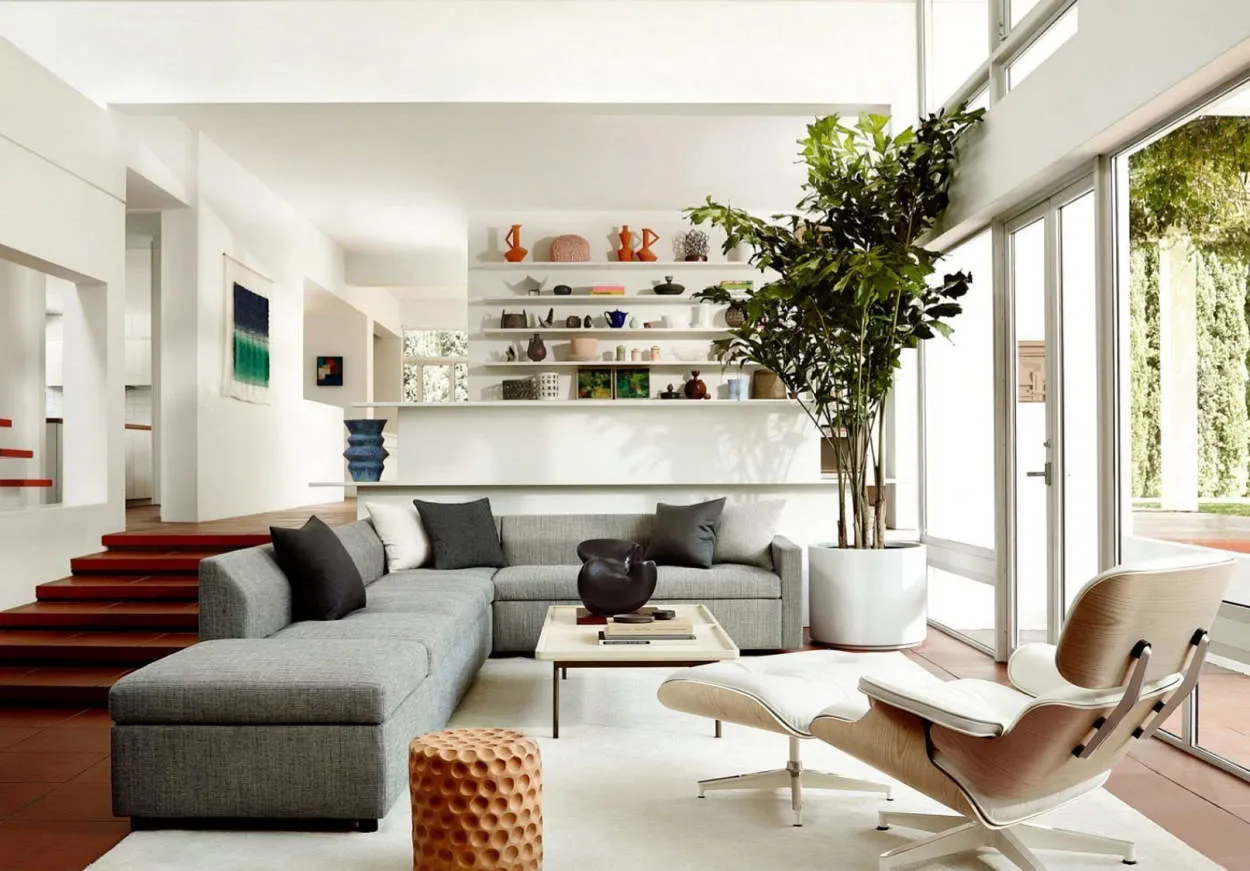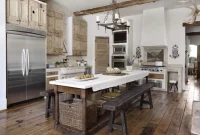A sustainable living room design focuses on eco-friendly choices that minimize environmental impact. From using recyclable materials and energy-efficient lighting to opting for organic and non-toxic furniture, creating a green living space can contribute to a healthier planet. Learn how to transform your living room into a sustainable sanctuary.
Choosing Sustainable Materials
In the quest for a sustainable living room design, incorporating eco-friendly choices is crucial. One of the key considerations is selecting sustainable materials that reduce environmental impact while enhancing the aesthetic appeal of the space. Here are some eco-friendly options to consider:
Natural Fibers
Opt for furniture upholstery and decorative fabrics made from natural fibers such as organic cotton, linen, or hemp. These materials are grown without harmful pesticides or synthetic fertilizers and are biodegradable.
Bamboo
Bamboo is a highly sustainable material due to its rapid growth and regenerative properties. Incorporate bamboo flooring, furniture, or decorative elements to add a touch of elegance to your sustainable living room.
Recycled Materials
Utilize materials made from recycled content, such as reclaimed wood or recycled glass, for furniture and décor items. Upcycling old furniture or repurposing materials not only reduces waste but also adds a unique touch to your design.
Sustainably Sourced Wood
If you opt for wooden furniture or flooring, choose products certified by organizations like the Forest Stewardship Council (FSC). These certifications ensure that the wood comes from responsibly managed forests.
Non-Toxic Paints and Finishes
When painting your living room walls or refinishing furniture, opt for non-toxic paints and finishes. These products minimize indoor air pollution and are better for both your health and the environment.
By choosing sustainable materials, you can create a beautiful and eco-friendly living room that aligns with your values of environmental conservation and sustainable living.
Energy-Efficient Lighting Options
In a sustainable living room design, making eco-friendly choices extends beyond furniture and decor. One important aspect to consider is the lighting. By opting for energy-efficient lighting options, you can reduce your carbon footprint and save energy and money in the long run.
LED Bulbs
LED (Light Emitting Diode) bulbs are a popular choice for energy-efficient lighting. They use up to 80% less energy than traditional incandescent bulbs and last up to 25 times longer, reducing the need for frequent replacements. LED bulbs are available in various colors and wattages to suit your preferred lighting style.
CFL Bulbs
CFL (Compact Fluorescent Lamp) bulbs are another energy-efficient option. They use about 75% less energy than incandescent bulbs and can last up to 10 times longer. CFL bulbs produce a warm, soft light and are available in different shapes and sizes to fit your fixtures.
Natural Light
Maximizing natural light is not only energy-efficient but also promotes a healthy and uplifting atmosphere. Arrange your living room layout to take advantage of natural light during the day by placing furniture near windows and using light-colored curtains or blinds that allow light to penetrate.
Dimmers and Sensors
Installing dimmer switches allows you to adjust the lighting intensity according to your needs, saving both energy and money. Motion sensors are another useful addition, automatically turning off lights when no one is present in the room, ensuring that energy is not wasted.
In conclusion, incorporating energy-efficient lighting options in your sustainable living room design is an important step towards reducing energy consumption and embracing an eco-friendly lifestyle. By choosing LED or CFL bulbs, maximizing natural light, and utilizing dimmers and sensors, you can create a well-lit and environmentally conscious living space.
Upcycling Decor Ideas
Are you looking to create an eco-friendly and sustainable living room design? One great way to achieve this is through upcycling. Upcycling is the process of transforming old or unused materials into something new and functional. It not only helps reduce waste but also adds character and uniqueness to your space. Here are some upcycling decor ideas to consider:
1. Repurposed Furniture:
Instead of purchasing new furniture, why not give new life to old pieces? You can repaint and distress a wooden table or reupholster a worn-out couch with sustainable fabric. These simple changes can completely transform the look of your living room.
2. Vintage Accessories:
Browse thrift stores or online marketplaces for unique vintage accessories that can add charm to your space. Consider using old crates as shelves, repurposing glass bottles as vases, or framing vintage postcards as wall art. These small details can make a big difference in creating a sustainable living room design.
3. Fabric Upcycling:
Instead of throwing away old clothes or fabrics, repurpose them! You can turn old T-shirts into throw pillow covers or patchwork quilts. Not only will this reduce waste, but it will also give your living room a personalized touch.
4. DIY Lighting:
Get creative with your lighting by upcycling old items. For example, you can turn mason jars into pendant lights or repurpose wine bottles into unique lamps. Not only will you save energy by using LED bulbs, but you will also have one-of-a-kind lighting fixtures in your living room.
5. Salvaged Wood:
Salvaged wood can be used to create stunning focal points in your living room. Consider making a coffee table from reclaimed pallets or installing a reclaimed wood wall. This not only adds a rustic and sustainable element to your design but also helps reduce the demand for new wood products.
6. Natural Elements:
Incorporating natural elements into your living room design can help create a harmonious and eco-friendly space. Use potted plants to bring in greenery and improve indoor air quality. Collecting driftwood or stones from the beach can also be used as decorative accents.
By embracing upcycling and sustainable design choices, you can create a unique and environmentally friendly living room. Get creative, think outside the box, and enjoy the process of transforming old items into new treasures for your home.
Eco-Friendly Furniture Brands
When it comes to sustainable living room design, choosing eco-friendly furniture brands is a crucial step. These brands prioritize the use of environmentally friendly materials and production processes to minimize their impact on the planet. By opting for furniture from eco-friendly brands, you can create a stylish and sustainable living room that aligns with your values.
1. [Brand Name] – This brand stands out for its commitment to using recycled materials in their furniture. They offer a wide range of seating options, tables, and storage solutions that are not only aesthetically pleasing but also eco-friendly.
2. [Brand Name] – Known for their innovative design, this brand focuses on using sustainable wood sources for their furniture. They have a beautiful collection of coffee tables, chairs, and shelves that can add a touch of elegance to your living room while promoting sustainability.
3. [Brand Name] – If you’re looking for upholstered furniture, this brand specializes in using organic fabrics and non-toxic dyes. Their sofas and armchairs are not only comfortable but also free from harmful chemicals commonly found in conventional upholstery.
4. [Brand Name] – This brand takes pride in repurposing materials such as reclaimed wood and metal to create unique and eco-friendly furniture. Their handcrafted pieces add a rustic charm to any living room while contributing to a greener planet.
5. [Brand Name] – With a focus on sustainability, this brand offers furniture made from recycled plastic materials. Their stylish chairs, tables, and accessories are not only durable but also help reduce plastic waste in landfills.
In conclusion, by choosing furniture from these eco-friendly brands, you can design a sustainable living room that reflects your commitment to the environment. Not only will you create a beautiful space, but you’ll also contribute to the preservation of our planet for future generations.
Plant-Based Decor Trends
In recent years, plant-based decor has become a popular trend in sustainable living room design. People are increasingly turning to plants to create a more eco-friendly and natural atmosphere in their homes. There are several plant-based decor options to consider when designing a sustainable living room:
1. Indoor Plants
Adding a variety of indoor plants to your living room can bring a vibrant and fresh feel to the space. Plants not only purify the air by removing toxins, but they also add visual interest and create a calming ambiance.
2. Living Walls
Living walls, also known as green walls or vertical gardens, are an innovative way to incorporate plants into your living room design. These vertical installations can transform a plain wall into a lush and captivating focal point.
3. Natural Materials
When choosing furniture and decor items, opt for pieces made from natural and sustainable materials such as bamboo, rattan, or reclaimed wood. These materials are not only environmentally friendly but also add a touch of warmth and organic beauty to the room.
4. Botanical Prints
Integrate botanical prints into your living room design through wallpaper, curtains, or artwork. These prints can bring nature-inspired patterns and colors into the space, further enhancing the plant-based theme.
5. DIY Terrariums
Get creative and make your own terrariums using glass containers, stones, soil, and small plants. These miniature ecosystems not only serve as stylish decor elements but also provide an opportunity for you to nurture and care for living organisms.
By incorporating plant-based decor trends into your sustainable living room design, you can create a space that not only looks beautiful but also contributes to a healthier and more eco-friendly lifestyle. So go ahead, bring the outdoors in and make your living room a haven of green.
Conclusion
In conclusion, sustainable living room design is all about making eco-friendly choices that promote a greener and healthier environment. By opting for eco-friendly materials, energy-efficient appliances, and conscious consumption, we can create a space that not only looks stylish but also minimizes our carbon footprint. Incorporating these eco-conscious choices into our living rooms is a step towards a more sustainable future.




